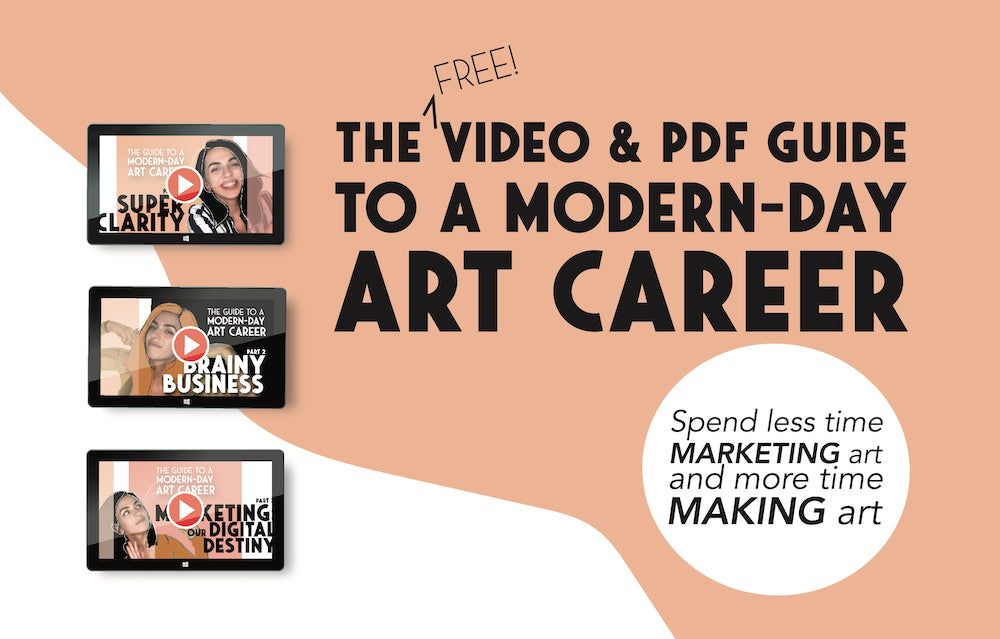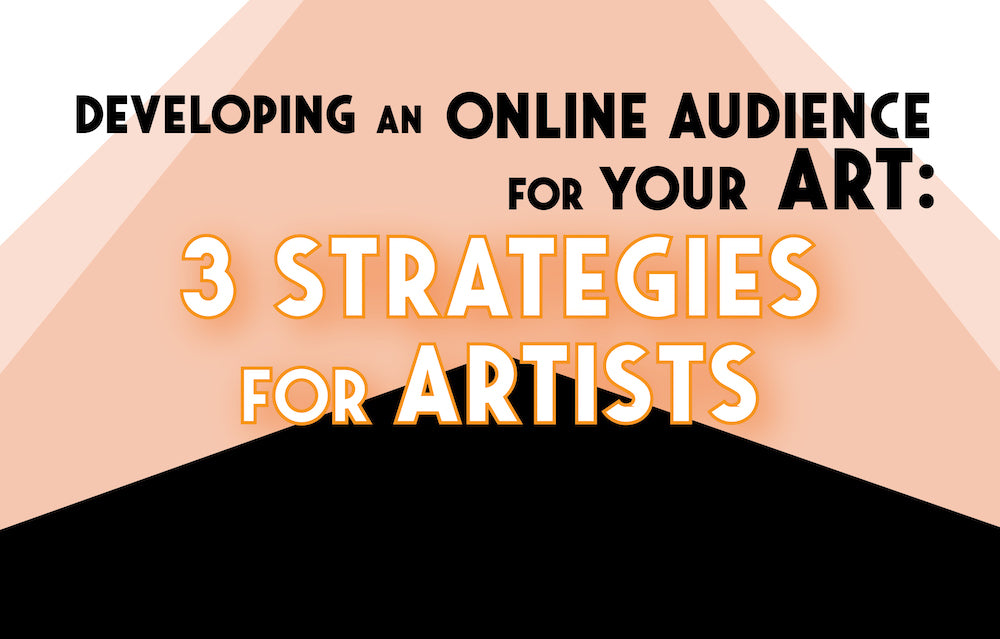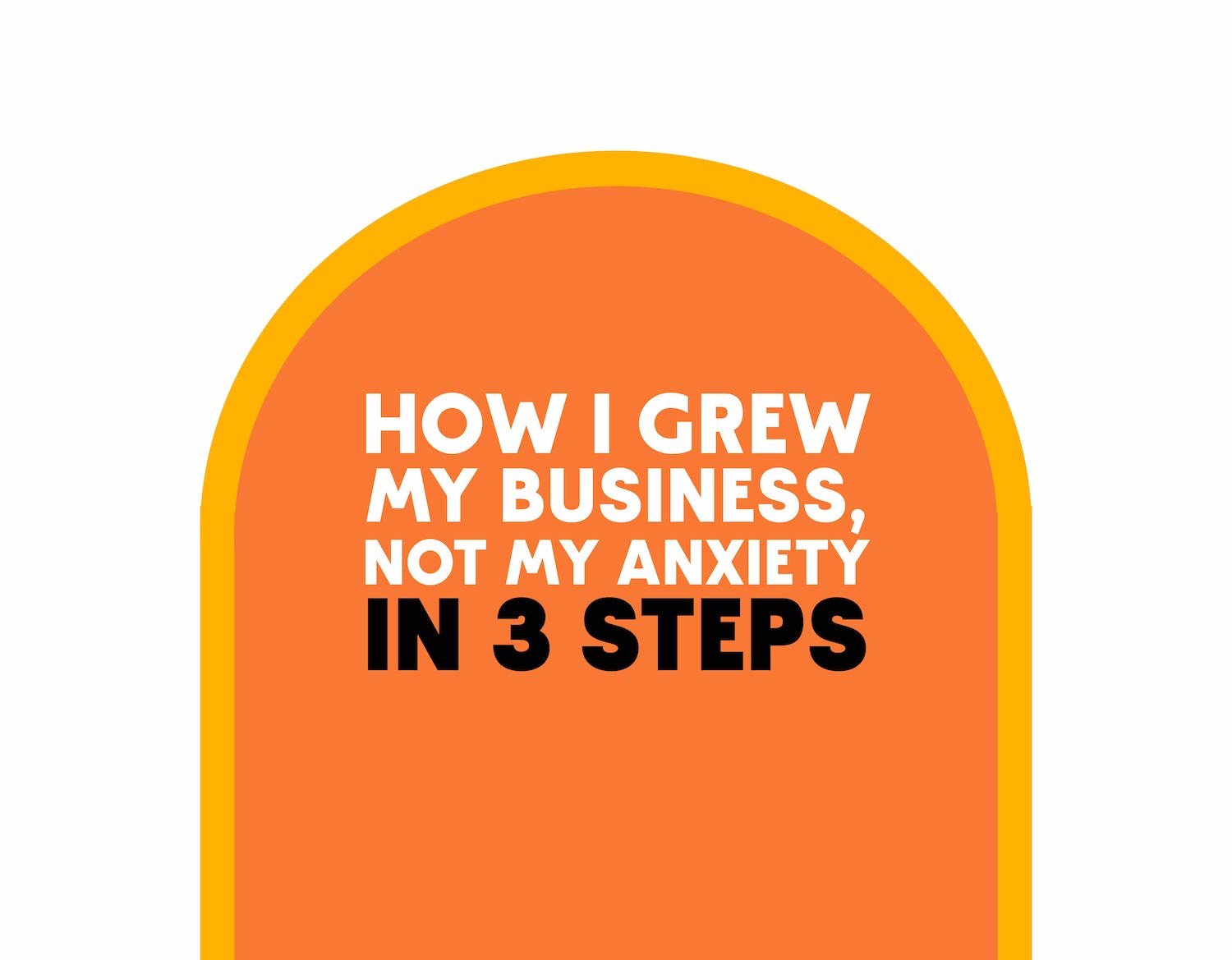The Visual Business Plan Template for Artists
Give ‘business plans' a Google, and you’re going to find an extremely wide array of types of business plans. There’s so many different categories under each plan, and each category is supposedly ‘vital’ and ‘mandatory’.
Each business school teaches you a different way to write your business plan, and each article on the internet does the same. (This particular article on the internet offers up the best, most visual one, of course.) If we outlined our business plans according to what common reputable sources say that we need to include in it, it would be a 240 page dissertation that no one - not even yourself at a later date - would take the time to read.
What this confusion unfortunately results in is the skipping of writing a business plan altogether, because it all just seems... unnecessary. But a good business plan is incredibly advantageous - we just have to boil it down to the right elements first.
The point of a good business plan is clarification
Including everything under the sun about what your business currently is and does, and what it might be and do in the future is not clarifying a f*cking thing for you. However, if you're looking to raise funding, investors are going to want a thorough breakdown of metrics & projections. But if you just want to draw up your business plan for you yourself so that it can guide everything, then boiling it down to the basics so that you don't get stuck here makes sense.
When you do a good job boiling your business plan elements down to what really matters to you and the type of future brand that you want to have, it does offer clarification. Writing out super corporate-y details when it's just you doesn’t seem necessary, right? Writing a 6 page wall of words when you’re a visual person just doesn’t make sense as well. Including a comprehensive marketing plan when you haven’t even figured out your main type of product or service that you want to offer also doesn’t make sense. So don’t waste a bunch of time here.
When making a business plan, boil it all down to the elements that matter the most to you, and nothing more.
After being frustrated and uninspired with the available business plan templates out there in InternetLand, I made my own. (I'm a very visual person & absolutely loathe wasting time on unnecessary tasks.) I boiled everything down to the elements that meant the most to me, made it visual, and then I tweaked it over time. Then I merged my real-life business experience with what I learned from my business degree & years of corporate experience, and came up with a business plan template for other artists to use. So naturally, it's one that's visual & contains absolutely no time-wasting fluff.
Get the Visual Business Plan Template for Artists emailed to you below, and then open it up and we’ll go over it right here and now:
This is interactive, so if you’re opening it up on your desktop, you can write directly into the boxes as we go along. You can have your business plan written by the end of reading this article.
Let’s dive right in!
Mission Statement
This is top priority - it guides every single project and task that I do. Your mission statement is where you write out your brand’s main goal and how you achieve it. (Also a great thing to keep on your homepage or ‘About’ page.) A good example is one that explains what you do, how you do it, & who you help/who your audience is.
In the age of the internet, we’re extremely distracted - your mission statement is how you stay focused. Shiny object syndrome is super real, and you might have even experienced it firsthand. It holds so, so many of us back. (This blog post on Shiny Object Syndrome is for you if any of that sounds familiar.) When figuring out the next task or project to do, ask yourself ‘Does it align with my mission statement?’ If it doesn’t - save yourself some time and don’t do it. If you center your projects and tasks around only ones that directly align with your mission statement, your focus will be astronomically higher, and your productivity will benefit greatly.
Value Proposition
How do you propose value? I’m not just talking about making your audience happy because they have an awesome painting in their living room - what else are you offering? Tutorials? Opportunities? A really important message that the world needs to hear? Collaborations that pull at the heart strings and evoke deep-seated emotion? If you’re not planning your business around the value that you offer, you’re fighting an uphill battle. Marketing is going to be tough, selling is going to be tough, maintaining your motivation to get through the grindy parts of business is going to be tough - unless you make it about value.
If you just want to be rich and have the freedom to work from anywhere - that’s cool - most of us want that. But I believe that the best brands factor in their value and overall contribution. You can have wealth and freedom, and impact peoples’ lives in a positive way.
In your template, write in the value proposition box how you plan on contributing to the world - what are you offering people that's making their lives better? The stronger the value proposition, the stronger an impact you can make for us humans. (And the easier marketing will be.)
Product Description
This doesn’t just have to be paintings or sculpture. Maybe you also sell consulting services, offer art licensing & brand partnerships, use affiliate marketing, or teach a course or video series on techniques or art business strategies - put all of these into the box.
Competitor Descriptions
Competition tends to makes us all better. Whether you try to make your product better than theirs, model your strategy after them, or approach them for collaboration opportunities - you need to know your competition so that you can understand where you fit into the market place from your clients' perspective.
This requires a lil’ research. When I was first filling out one of these competitive analysis boxes for an entrepreneur competition, I thought ‘Ugh! Why do I need to do this? No one does what I do, and no one offers what I’m offering’. Type in adjectives describing the type of work that you do into any search bar (Google, Instagram, Youtube, Tiktok, etc.) or ask friends/family/colleagues about similar types of work to yours & I bet you'll find something close.
Your greater audience isn't going to delve deep into your specific offerings - they're probably just going to lump you in somewhere, and you need to be aware of what that 'lump' is. (And it's not anything personal when you get 'lumped' in somewhere - it's just how our human brains seem to work.)
Understanding your competitors is imperative if you want to be able to explain what makes you different from other brands in your marketspace.
And not only that, but you can figure out how to strategically position yourself inside your market so that no one is offering what you’re offering. For example, some of Evergray’s competitors have a monthly membership subscription for artists, or they teach you how to master a specific social media platform like Instagram - I need to know all of these things if I’m to make sure that I’m not positioning my company in a way that someone else already has.
(Heads up - jargon coming your way!) Once I'm aware of my competition, I can identify my market differentiators & be sure to include these differentiators in my overall marketing so that my audience knows how my offerings are different.
Marketing Plan
Ok - don’t overthink this part. (I totally did!) Just list out the platforms and strategies that you plan on using. These could be everything under the sun - Pinterest, Youtube, Instagram, social media advertising, SEO, a word of mouth strategy, webinars, Linkedin, Facebook groups, writing articles for features, job posting sites, collaborations with other artists or influencers and other brands, etc.
With marketing, it’s going to be pretty difficult to immediately know if something is going to work for you and your particular setup. (With ‘setup’ being the market, your product, your branding, current social media algorithms, etc.) Instead, what makes more sense is to keep an open mind and have a marketing plan that you’ll test out and tweak with little optimizations here and there until you see some success. Some things will work and some will not - just keep up with it because in the age of the internet, successful marketing can have many different faces. And make sure that you tackle only one strategy or social media platform at a time - it’ll be very difficult to make actual progress if you’re chasing a bunch of shiny objects all at once.

SWOT Analysis
SWOT stands for Strengths, Weaknesses, Opportunities, & Threats, and analyzing all of this is INVALUABLE. You’re basically defining your business for what it is at its core, and you can use this to determine which marketing strategies are going to work best.
If you actually know all of your business’ strengths, weaknesses, opportunities, & threats when you’re writing out your business plan, you’re a f*cking genius. It’s so tough to know how exactly your business is going to stack up in the first stages (which for me, those stages lasted about 3 years). But just do a little research, and make your best guess as to what your business’ actual strengths, weaknesses, opportunities, and threats are.
Vision/Long-term Goals
This differs from your mission statement because the mission statement is more practical and current, whereas the vision is more like your hopes and dreams for the business. Maybe right now, your mission statement is ‘a visual artist devoted to empowering self-confessed, non-creative people via workshops and tutorials’, but your vision and long-term goal might be ‘establishing a strong, supportive community that fosters creativity cultivation’. Are you pickin' up what I'm puttin' down?
Putting the Visual Business Plan Template for Artists to Use
If you fill in the whole business plan template, and it doesn’t seem all that doable or enjoyable to you - pivot, which just means adjust your strategy a bit. (Here's where 'pivot' comes from) If there’s too much competition and not enough value that you're able to offer in comparison - pivot to offer a different type of value that other competitors aren’t. If your competitors all have pretty much the same mission statement as you, pivot to help a slightly different group of people who don’t have as much options or support.
I know that we're still talking about art here, and for most people, it's easy to say 'What do you mean 'pivot' to offer more options or support to a different group of people?' 'How are all artists not out to just make art & make a living doing it?' But you & I know that artists can serve many different types of experiences, products, & services to many different types of people.
If you look at your SWOT analysis and your strengths are pretty unique compared to your competitors - pivot and make sure that the rest of your business plan is focused on playing up your strengths because that’s where you have the most to offer.
Use your business plan to review your current ideas for what you’re going to do next, and don’t be scared to pivot so that your business is positioned in the best possible way.
Not sure what to even put in this business plan? Looking for a concrete framework to take your art brand to the next level? The 7 Day Online Artist Plan has your back.
What is The 7 Day Online Artist Plan?
It's an online course that eliminates distractions & gives you the blueprint for being an artist with a powerful online brand. And you'll be able to create that powerful online brand foundation in 7 days.
Why is it so special?
The 7 Day Online Artist Plan is affordable, straightforward, cuts to the transformation part really fast, and there's nothing like it in the market today. This is not a smorgasbord of advice wrapped up with a bow - it's a journey that moves the needle in a MASSIVE way because the strategy behind it is coming from someone who has both the business chops and the artist perspective. And it's set up to happen so fast that you can't get distracted.
Learn More About The 7 Day Online Artist Plan Here






So excited about the SWOT, especially where you said about pivoting; playing up one’s strength if one finds it different from other competitors. Makes one stand out😁
Thank you Evergray
This definitely shows me where I am at from a visual perspective and for once there is something that is easy for me to understand and grow from. Thank you:)
Most excited about our Value Proposition.
Most confused about our SWOT.
Marketing plan
I’m most excited about SWOT! :)
Leave a comment